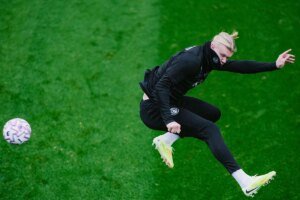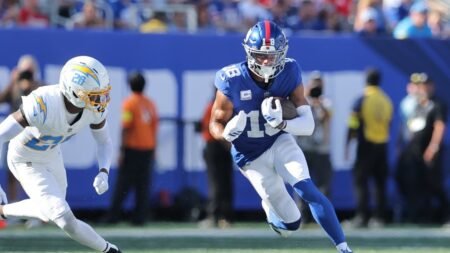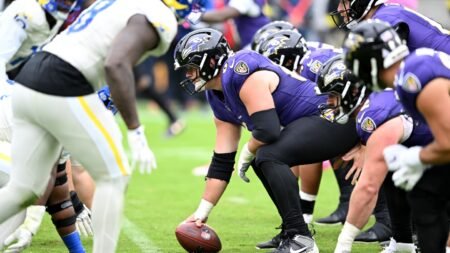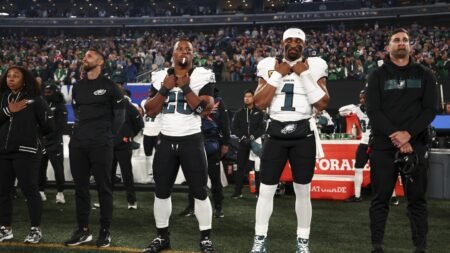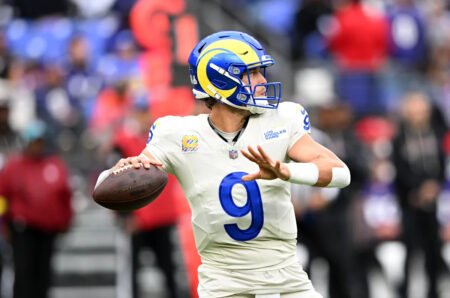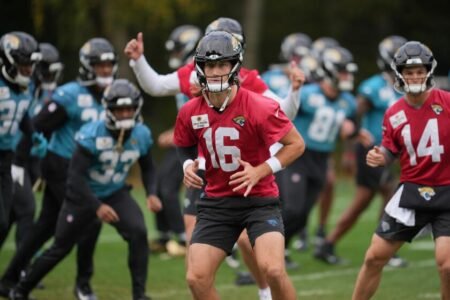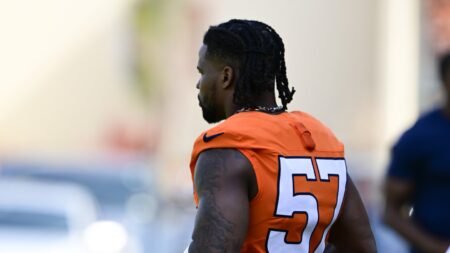The early bird may get the worm, but the night owl can find some of the best values in the Week 4 college football schedule. There are plenty of big-time and emerging West Coast programs in action on Saturday night, and for those out West or East Coasters willing to stay up late, there’s no reason to end your college football betting experience once the 8 p.m. ET action concludes. Some of the SportsLine model’s top plays on the entire Week 4 college football schedule come in games that start after 9 p.m. ET, including both USC and Cal to win and cover the spread.
With the latest DraftKings promo code, new users can receive both bonus bets toward Sunday NFL betting while enhancing your viewing experience. The latest DraftKings promo offers $200 in bonus bets after placing a first wager of $5 or more, plus over $200 off NFL Sunday Ticket. The model also likes Wyoming to keep pace to cover the spread against Deion Sanders’ Colorado Buffaloes, and you can turn these picks into a late-night Week 4 college football parlay at DraftKings Sportsbook for college football bets.
The model simulates every FBS game 10,000 times and is up well over $2,000 for $100 players on its top-rated college spread football picks, and is a profitable 32-20 on money-line and over/under picks dating back to 2024. Anybody following its college football betting picks could have seen strong returns.
Three college football late-night betting picks for Week 4 (odds subject to change):
- Wyoming +13.5 vs. Colorado (-108)
- California -12.5 vs. San Diego State (-110)
- USC -17.5 vs. Michigan State (-115)
Combining the model’s three picks into a college football parlay at DraftKings Sportsbook would result in a payout of +587 (risk $100 to win $587).
Wyoming +13.5 vs. Colorado (-108, DraftKings)
Colorado remains a big name for college football bettors with Deion Sanders on the sideline, but without Shedeur Sanders at quarterback and two-way superstar Travis Hunter, these aren’t the same Buffaloes as last year. Colorado is 1-2 overall and hasn’t covered the spread in any of its first three games heading into this non-conference contest. Wyoming is 2-1 overall and ATS, nearly covering a 24-point spread in a 31-6 loss to No. 20 Utah last week. The Buffaloes haven’t had much consistency at quarterback this season, as they are expected to return to senior Kaidon Salter, who didn’t start last week in a 36-20 loss to Houston. The model projects Wyoming to cover the spread in 56% of simulations on Saturday at 10:15 p.m. ET.
California -12.5 vs. San Diego State (-110)
Cal is off to a 3-0 start, including defeating Minnesota, 27-14, as 3-point underdogs last week. The Golden Bears have scored at least 27 points in all three contests, and are averaging 30.5 points per game this season. Jaron-Keawe Sagapolutele, the No. 7 quarterback in the Class of 2025 according to 247Sports, is off to a strong start as a true freshman. He’s thrown for 780 yards and six touchdowns with one interception, including 279 yards and three touchdowns last weekend against Minnesota. Meanwhile, San Diego State is coming off a 36-13 loss to Washington State despite only being a 1.5-point underdog. The model projects Cal to cover the spread on the road in 69% of simulations on Saturday at 10:30 p.m. ET.
USC -17.5 vs. Michigan State (-115)
Lincoln Riley has the USC offense rolling to begin the 2025 college football season, as the Trojans have the No. 1 scoring offense in the nation at 55 points per game. No. 25 USC leads in yards per game (604) and yards per play (9.5) behind a strong passing and rushing combination. Jayden Maiava has thrown for 989 yards with six touchdowns and no interceptions, with NFL prospect Makai Lemon totaling 16 receptions for 311 yards. Running back Waymond Jordan has 286 rushing yards on 7.3 yards per carry. USC is 3-0 overall and 2-1 ATS this year. Michigan State is also 3-0 this season but 0-3 ATS, failing to cover their numbers as favorites in any of its first three games heading into an 11 p.m. ET kickoff on Saturday. The model projects USC to cover the spread at home in 62% of simulations.
Read the full article here
